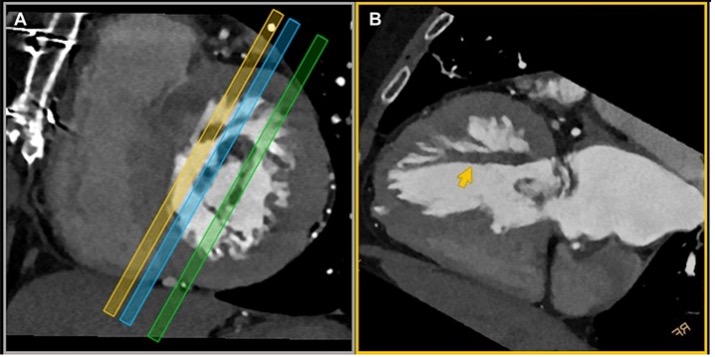 The latest issue of CASE is now available with intriguing reports, including “The Complex Hemodynamic Interplay between Mitral Arcade, Midventricular Obstruction, and Prosthetic Aortic Valve” by Taverna et al. CASE Editor-in-Chief Vincent Sorrell, MD, FASE, remarked, “One of the great values of CASE is the ability to use high-quality echo images matched to tomographic cardiovascular imaging to educate readers about rare diseases they are unlikely to see in their individual clinical practice. This month’s issue fulfills that goal with the report from Taverna that showcases mitral arcade; there are not very many published reports in adults owing to both its rarity and possible under-diagnosis. During the editorial review process, these authors worked closely with section editors who are experts in congenital heart disease to provide readers with very precise descriptions, concluding that this patient likely met criteria for a partial Shone’s complex. They also use very detailed volume-rendered 3D-CT images to demonstrate how the pathoanatomy of this particular mitral arcade is atypical and consists of a double-bridge connecting the anterior and posterior leaflets to the papillary muscles. In summary, the authors rightly conclude that a comprehensive multimodal cardiac imaging approach (CT for anatomy; echo Doppler for physiology) is essential!”
The latest issue of CASE is now available with intriguing reports, including “The Complex Hemodynamic Interplay between Mitral Arcade, Midventricular Obstruction, and Prosthetic Aortic Valve” by Taverna et al. CASE Editor-in-Chief Vincent Sorrell, MD, FASE, remarked, “One of the great values of CASE is the ability to use high-quality echo images matched to tomographic cardiovascular imaging to educate readers about rare diseases they are unlikely to see in their individual clinical practice. This month’s issue fulfills that goal with the report from Taverna that showcases mitral arcade; there are not very many published reports in adults owing to both its rarity and possible under-diagnosis. During the editorial review process, these authors worked closely with section editors who are experts in congenital heart disease to provide readers with very precise descriptions, concluding that this patient likely met criteria for a partial Shone’s complex. They also use very detailed volume-rendered 3D-CT images to demonstrate how the pathoanatomy of this particular mitral arcade is atypical and consists of a double-bridge connecting the anterior and posterior leaflets to the papillary muscles. In summary, the authors rightly conclude that a comprehensive multimodal cardiac imaging approach (CT for anatomy; echo Doppler for physiology) is essential!”
Following that Multimodality Imaging report, authors in Infections in the Heart present a report titled, “Vegetations Lurking in the Dark and the Role of Neoendothelialization,” reviewing the published literature on this potential complication and discussing the possible risk-assessment role of cardiac CT by monitoring neoendothelization in these devices. Over in the Hemodynamic Corner of CASE, there are two reports: one on the importance of spectral Doppler in detecting mitral regurgitation in patients with acoustic shadowing from prosthetic valves, and one that describes the unique mitral and tricuspid spectral Doppler inflow patterns in a patient with non-sinus rhythm. With high-quality 2D and 3D echo images, a case in Rare But Deadly Findings offers a learning lesson to readers about a left atrial dissection after complications of mitral valve surgery. To round out this issue, there is a letter to the editor discussing a previous CASE on a novel transcatheter approach to treat primum atrial septal defects with a response from that article’s authors.
As with all CASE issues, these reports demonstrate the value of quality imaging over quantity. Be sure to read Dr. Sorrell’s editorial as he explores how to maintain this principle in a healthcare environment that increasingly rewards growth and productivity.
Looking for a journal to submit your case report to? We want to hear from you! Email us with questions or submit your report today.
Publish date
June 18, 2024
Topic
- CASE
Related News



